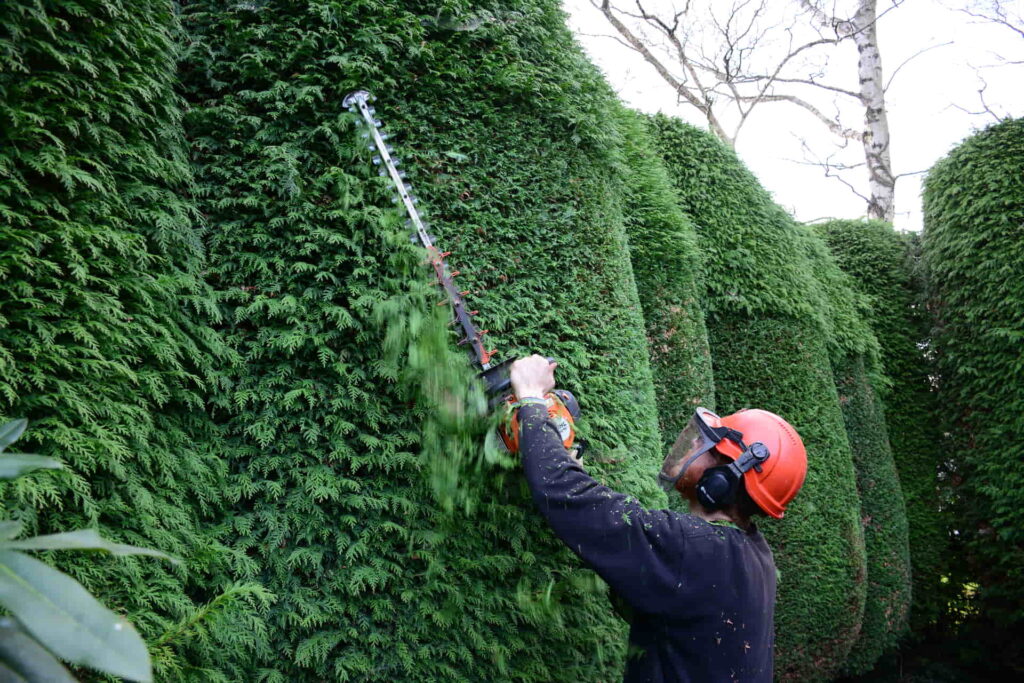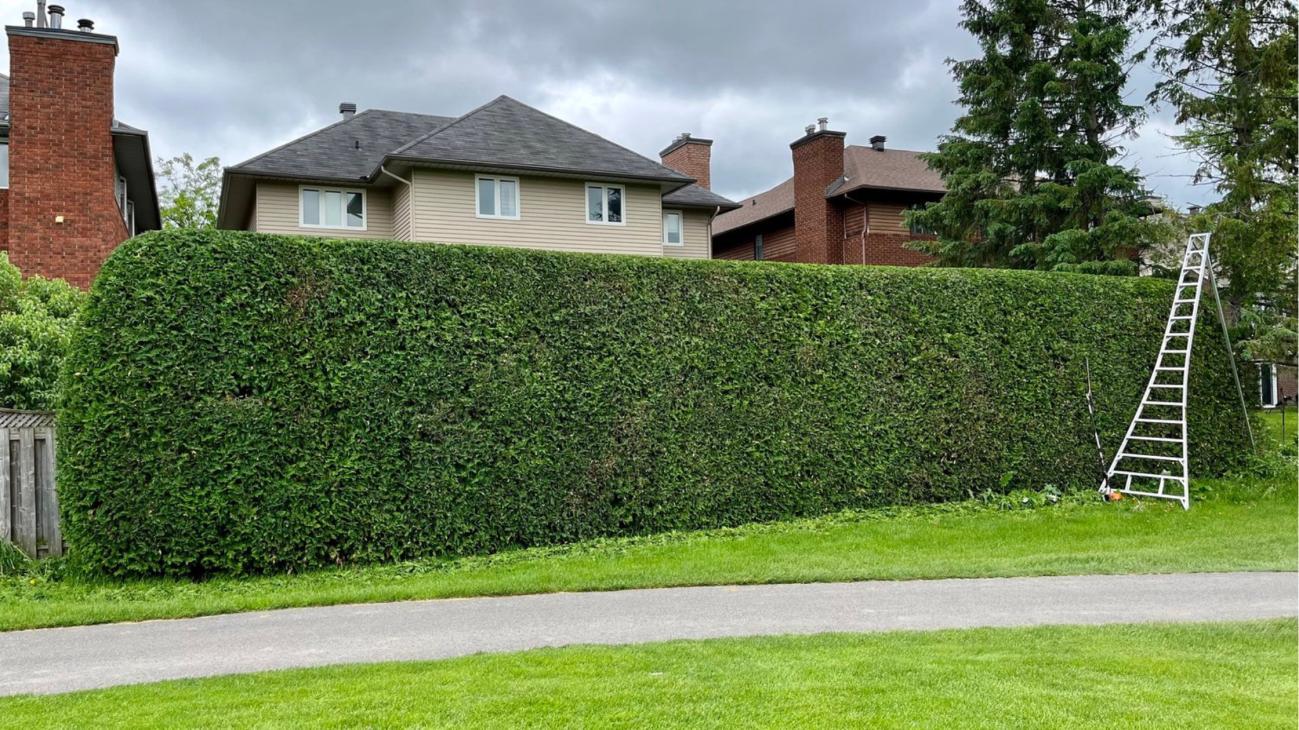Essential Tips for Hedge Maintenance and Shaping
Maintaining and shaping your hedges is crucial for keeping your outdoor space in top form. With a little know-how and regular care, you can ensure that your hedges remain healthy, vibrant, and visually appealing. In this article, we will explore the basics of hedge maintenance, the art of hedge shaping, seasonal care tips, common hedge problems and solutions, as well as sustainable hedge maintenance practices. By following these essential tips, you can keep your hedges looking their best year-round.
Understanding the Basics of Hedge Maintenance
Hedge maintenance involves a combination of tasks that help your hedges thrive. Regular care not only promotes healthy growth but also enhances the overall aesthetic of your outdoor space.
When it comes to hedge maintenance, it’s not just about trimming and shaping. Proper care also involves assessing the health of your hedges, identifying any signs of stress or disease, and taking corrective actions promptly. By staying proactive in your maintenance routine, you can ensure that your hedges remain vibrant and robust throughout the year.
Importance of Regular Hedge Maintenance
Regular hedge maintenance is vital for several reasons. Firstly, it helps to prevent overgrowth, which can obscure pathways and obstruct views. Additionally, regular pruning promotes increased density and encourages lush foliage. Finally, maintaining your hedges reduces the risk of developing pest infestations and diseases.
Moreover, consistent hedge maintenance can contribute to the overall biodiversity of your garden or landscape. Well-maintained hedges provide shelter and nesting sites for birds, insects, and other wildlife, fostering a balanced ecosystem within your outdoor environment.
Tools Needed for Hedge Maintenance
To effectively maintain your hedges, you’ll need a few essential tools. Here are some must-have items:
- Hedge trimmers: Choose a model that suits the size and type of your hedges.
- Pruning shears: Ideal for shaping and fine-tuning your hedges.
- Loppers: Useful for cutting through thicker branches.
- Gloves: Protect your hands from thorns and other potential hazards.
Additionally, consider investing in a pruning saw for tackling larger branches and a sturdy ladder to reach the top of taller hedges safely. Having the right tools for the job not only makes hedge maintenance more efficient but also ensures that you can address various aspects of care with precision and ease. Learn more about quality and reliability of professional hedge trimming services near me.
Mastering the Art of Hedge Shaping
Shaping your hedges can transform them into stunning focal points in your outdoor space. By understanding different hedge shapes and employing the right techniques, you can achieve the desired aesthetic effect.
When it comes to hedge shaping, the possibilities are endless. Not only do well-maintained hedges add structure and beauty to your garden, but they also serve practical purposes such as creating boundaries and providing privacy. A carefully shaped hedge can enhance the overall appeal of your landscape, making it a place of tranquility and visual interest.
Different Hedge Shapes and Their Benefits
Hedges can be shaped in various styles, each with its own unique advantages:
- Formal hedges: Neat and tidy, ideal for creating a classic look.
- Informal hedges: Provides a more natural, relaxed appearance.
- Topiary hedges: Sculptural shapes that add whimsy and charm.
- Screening hedges: Creates privacy by blocking views and reducing noise.
Each type of hedge shape serves a different purpose and can complement different styles of gardens. Formal hedges, with their clean lines and geometric precision, are often used in traditional or formal garden designs to add a sense of order and elegance. On the other hand, informal hedges offer a more relaxed and casual feel, blending seamlessly into cottage gardens or natural landscapes.

Techniques for Achieving Desired Hedge Shapes
When shaping your hedges, there are a few key techniques to keep in mind:
Regular pruning
Trim your hedges at least two to three times per year to maintain their shape.
Tapering
Gradually decrease the width of your hedge towards the top, allowing light to reach the lower branches.
Leveling
Keep the top of your hedge flat, using a string or guide for accuracy.
Layering
Trim each layer of your hedge slightly narrower than the one below to create a visually appealing look.
Proper maintenance is crucial for the health and longevity of your hedges. Regular pruning not only helps in shaping them but also promotes new growth and ensures that the hedge remains dense and lush. By mastering the art of hedge shaping, you can elevate the beauty of your outdoor space and create a harmonious environment that you can enjoy for years to come.
Seasonal Care for Your Hedges
As the seasons change, so do the needs of your hedges. Proper care during each season will ensure their continued health and vitality.
Ensuring your hedges thrive throughout the year involves understanding and implementing seasonal care practices tailored to their growth cycles and environmental conditions. By providing consistent attention and maintenance, you can promote lush foliage, robust growth, and overall resilience in your hedge plants.
Spring and Summer Hedge Care
In spring and summer, your hedges are in their peak growth phase. Here’s how to care for them during this time:
Regular watering
Ensure your hedges receive enough water, especially during dry spells. Adequate hydration is essential for supporting active growth and preventing stress-induced issues.
Fertilization
Apply a slow-release balanced fertilizer to promote healthy growth. Nutrient-rich soil encourages vigorous foliage development and enhances the plant’s ability to withstand environmental stressors.
Weed control
Keep the area around your hedges free from invasive plants. Weeds compete with hedges for resources and can hinder their growth if left unchecked.
Moreover, monitoring for pests and diseases is crucial during the warmer months when these issues are most prevalent. Regular inspections can help detect early signs of infestations or infections, allowing for prompt intervention to protect the health of your hedges.
Autumn and Winter Hedge Care
During autumn and winter, your hedges will require different care to prepare them for the colder months:
Pruning
Trim your hedges in autumn to remove dead or damaged branches. Pruning not only enhances the aesthetic appeal of the hedge but also promotes air circulation and sunlight penetration, reducing the risk of fungal diseases.
Applying mulch
Mulch around the base of your hedges to protect the roots from frost. A layer of organic mulch acts as insulation, helping maintain soil temperature and moisture levels during winter dormancy.
Protection from extreme weather
Shield your hedges from harsh winds and heavy snowfall, if necessary. Erecting windbreaks or burlap screens can safeguard vulnerable hedges from winter desiccation and physical damage.
Additionally, autumn is an ideal time to assess the overall health of your hedges and address any structural weaknesses or nutrient deficiencies. Conducting a thorough evaluation before winter sets in allows you to preemptively address issues and set the stage for a successful growing season ahead.
Common Hedge Problems and Solutions
Like any plants, hedges can face various issues. It’s essential to identify and address these problems promptly to prevent further damage.
When it comes to maintaining healthy hedges, being proactive is key. Regularly inspecting your hedges for signs of distress can help you catch problems early on, giving you a better chance of resolving them effectively. Keep an eye out for issues such as discoloration, wilting, or unusual growth patterns, as these can be indicators of underlying problems that need attention.
Dealing with Hedge Diseases
Hedge diseases can include fungal infections, root rot, or leaf spot diseases. Here’s how to handle them:
Early detection
Regularly inspect your hedges for symptoms of disease, such as discolored leaves or unusual growth patterns.
Pruning infected parts
Remove any infected branches or leaves immediately to prevent the spread of disease.
Using fungicides
If the disease has spread extensively, consult a professional and consider using appropriate fungicides.
It’s important to note that prevention is often the best defense against hedge diseases. Maintaining good air circulation around your hedges, avoiding overhead watering, and ensuring proper spacing between plants can help reduce the risk of fungal infections and other diseases taking hold.
Addressing Common Hedge Pests
Pests can wreak havoc on your hedges if left unchecked. Here are some tips for dealing with common hedge pests:
Identify the pest
Different pests require different treatment methods, so it’s essential to determine the specific pest affecting your hedges.
Biological control
Encourage natural predators such as ladybugs and birds to help control pests.
Using insecticides
In severe cases, consider using targeted insecticides to eliminate the pest population.
Creating a healthy ecosystem in your garden can also help naturally deter pests from infesting your hedges. Planting companion plants that attract beneficial insects, practicing crop rotation, and maintaining overall garden hygiene can all contribute to pest prevention without the need for harsh chemicals.

Sustainable Hedge Maintenance Practices
By adopting sustainable practices, you can maintain your hedges while minimizing the impact on the environment.
Ensuring the health and vitality of your hedges goes beyond just trimming and shaping. It involves a holistic approach that considers the ecosystem in which your hedges exist. By implementing environmentally friendly hedge care practices, you not only maintain the beauty of your landscape but also contribute to the overall well-being of the environment.
Environmentally Friendly Hedge Care
Here are some eco-friendly tips for hedge maintenance:
Composting green waste
Instead of disposing of clippings, use them to create nutrient-rich compost. This compost can then be used to fertilize your hedges naturally, promoting their growth and health.
Water conservation
Collect rainwater to reduce the need for excessive watering. Installing a rain barrel system can help you harness nature’s resources efficiently and sustainably.
Integrated pest management
Employ natural controls and prevention methods to minimize the use of harmful pesticides. Introducing beneficial insects like ladybugs or planting pest-repelling herbs can help keep your hedges pest-free without compromising the environment.
Implementing these practices not only benefits your hedges but also contributes to the larger ecosystem by reducing waste, conserving water, and promoting biodiversity.
Promoting Hedge Health and Biodiversity
By incorporating diverse plant species into your hedges, you can create a habitat for beneficial insects and birds. This increases biodiversity and enhances the overall health of your outdoor space.
Furthermore, maintaining a diverse hedge not only supports local wildlife but also adds visual interest to your landscape. Mixing different plant species can create texture, color variation, and seasonal interest, making your hedge a focal point of your garden throughout the year.
In conclusion, proper hedge maintenance and shaping are essential to keep your hedges looking their best. Understanding the basics of hedge maintenance, mastering the art of hedge shaping, and implementing seasonal care practices are crucial for their health and longevity. Additionally, addressing common hedge problems promptly and adopting sustainable maintenance practices will ensure your hedges thrive while minimizing their impact on the environment. By following these essential tips, you can enjoy beautiful and vibrant hedges year-round.
Other resources: From Negotiation to Closing with an Adelaide Buyers Agent

